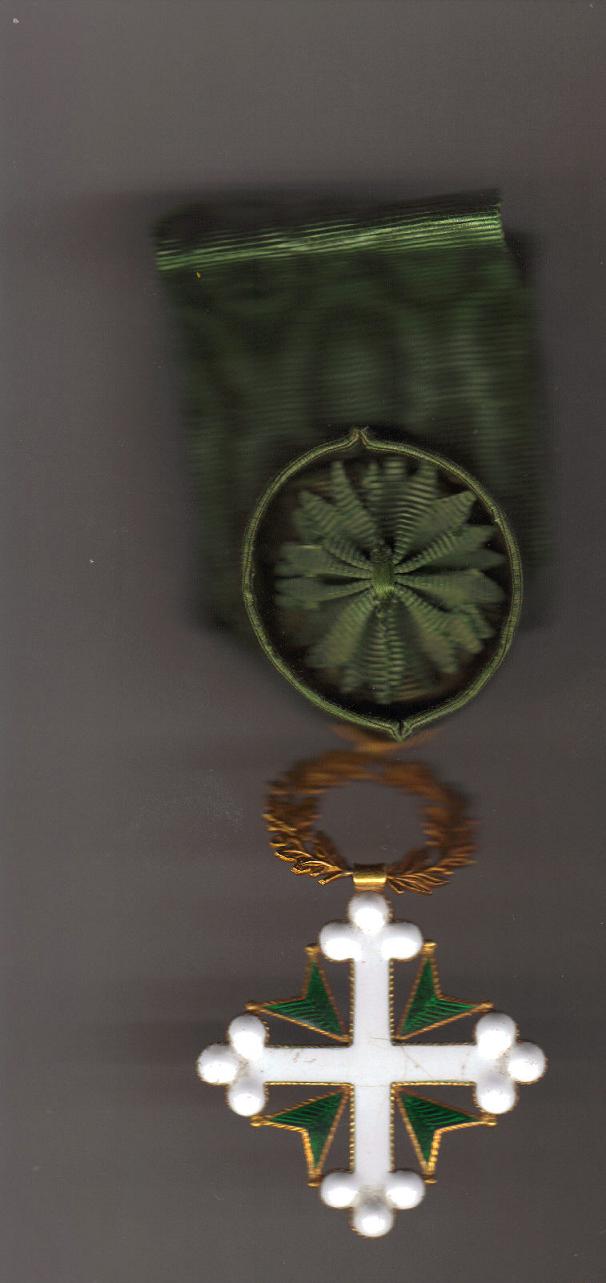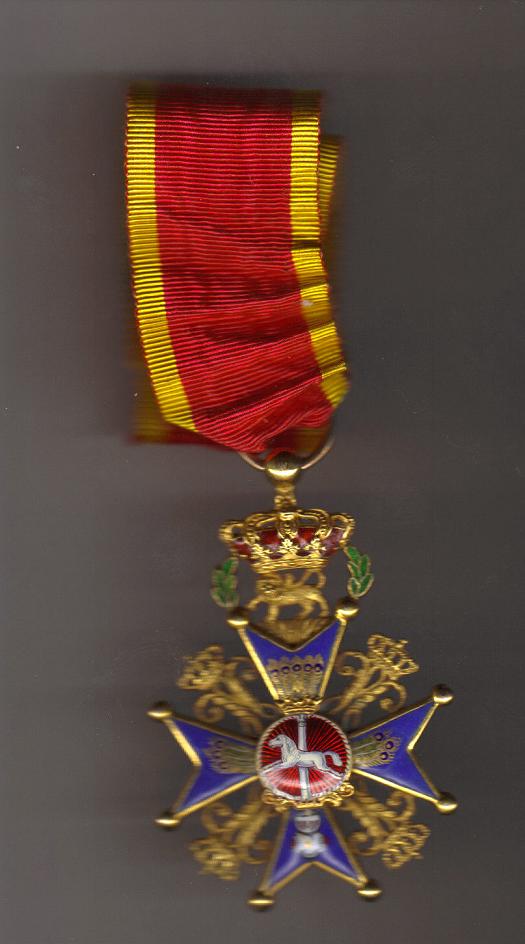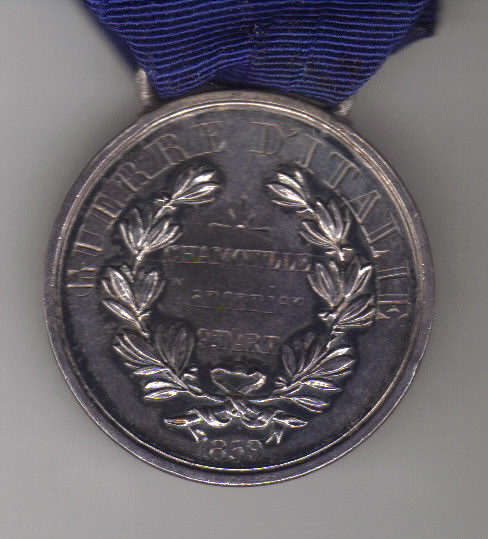-
Posts
809 -
Joined
-
Last visited
Content Type
Profiles
Forums
Blogs
Gallery
Events
Store
Posts posted by Yankee
-
-
..I would say these two firms has just made the cases for medals, not the medals itself...
Thanks for that Iver. Those Austro-Hungarians sure did make beautiful cases.
0 -
Please excuse spelling mistake. When did these firms go out of business?Hi Cimbineus
Glade it came out in one piece
 . Are you 100% certain it is bakelite? Is the reverse heavy or light? True it was invented in the early 1900's used for industrial & electrical applications. In the 1920's & 30's was widely used in consumer goods. What is most interesting are the cases. The case for the Signum Laudis is by Maurer. The case in the Dorotheum is by Tiller. It is difficult to imagine that two firms would both manufacture something so rare. Does anybody kmow these two firms had closed their doors for good? Also in the 20's the Austrian Generals used parade uniforms in white.
. Are you 100% certain it is bakelite? Is the reverse heavy or light? True it was invented in the early 1900's used for industrial & electrical applications. In the 1920's & 30's was widely used in consumer goods. What is most interesting are the cases. The case for the Signum Laudis is by Maurer. The case in the Dorotheum is by Tiller. It is difficult to imagine that two firms would both manufacture something so rare. Does anybody kmow these two firms had closed their doors for good? Also in the 20's the Austrian Generals used parade uniforms in white. Sincerely
Yankee
0 -
... and here is the second one:

Hi Cimbineus
Glade it came out in one piece
 . Are you 100% certain it is bakelite? Is the reverse heavy or light? True it was invented in the early 1900's used for industrial & electrical applications. In the 1920's & 30's was widely used in consumer goods. What is most interesting are the cases. The case for the Signum Laudis is by Maurer. The case in the Dorotheum is by Tiller. It is difficult to imagine that two firms would both manufacture something so rare. Does anybody kmow these two firms had closed their doors for good? Also in the 20's the Austrian Generals used parade uniforms in white.
. Are you 100% certain it is bakelite? Is the reverse heavy or light? True it was invented in the early 1900's used for industrial & electrical applications. In the 1920's & 30's was widely used in consumer goods. What is most interesting are the cases. The case for the Signum Laudis is by Maurer. The case in the Dorotheum is by Tiller. It is difficult to imagine that two firms would both manufacture something so rare. Does anybody kmow these two firms had closed their doors for good? Also in the 20's the Austrian Generals used parade uniforms in white. Sincerely
Yankee
0 -
Yankee pointed me this topic, even it's almost 4 years old, still I would like to make some comments;
On my opinion the guy was at the end Bulgarian citizen; as first order and medal on the clasp are Bulgarian ones. I’m not surprised that Turkish of Medjidie is on the last place; I’ve seen some old Serbian and as well Austrian clasps where Turkish orders were placed on the last position. Sometimes I’m even wondering how Serbs and Bulgarians put Turkish orders on theirs clasps at all, as Turks were theirs Arch-enemy from middle ages onwards.
However, guy was in interesting type, been present everywhere. I know that many German officers joined Serbian army in 1876 to fight against Turks. (I was told in that time Prussian army lowered number of officers and many lost their jobs). In that time Serbian regular army counted altogether 4.000 soldiers and officers (!!). especially shortage of officers was painful. One of fine example is young Prussian officers, Paul Sturm, who joined Serbian army in 1876 and become one of its greatest generals in WW1. He changed his name in Pavle Jurišič – Šturm (juris is Serbian word for storm, German sturm). Very likely this man can be a German officer (Bavarian cross and Prussian medal 1870) who later had search for his luck around Balkan and become finally a Bulgarian citizen; as ruling family in Bulgaria was German by origin, this was not difficult.
Beside officers many other foreigners had supported Serbian army in wars 1876 – 1878 and had provided services behind the front lines. Such volunteers were usually awarded with medals for Zealous service while fighting officers received medals for bravery. Medal was awarded ‘…for pronounced and zealous service shown during the war in support of the army fighting on the battlefield or for generally contributing to liberation and independence… On 1 March 1878, soon after these medals had been instituted, the war ministry already issued a circular decree, specifying that ‘persons with merits for the war and war supplies can be proposed to be decorated with the Medal for Zealous Service, even if they have not been members of the army’. This enlarged the number of persons decorated and many well-known civilians, e.g. Serbian university professors, eminent doctors and high prelates who had participated in the war, were awarded these medals, and as well many foreign civilians.
And few pics of medals for Miguel; if you haven’t already found some. Medal some in gold and silver class and can be on elongated or triangle red ribbon. Pics of two medals with brilliants are not known.
Bellow obverse of the gold medal.
Hi Bovec 1313
Many kind thanks for your descriptive insight into the possibility of his occupation & criteria to win the zealous service medal. It never had occured that he'd have Bulgarian citizenship. I suppose back then dual citizenship
 was a rarity. If he had changed his name as you strongly brought up that possibility, tracing the bar would be next to impossible
was a rarity. If he had changed his name as you strongly brought up that possibility, tracing the bar would be next to impossible 

since he could have used either name in the medal rolls. As I learned from you earlier the Serbian records were destroyed
 in WWII. There would be no possibility to cross-reference the Bulgarian medal even if those do exist
in WWII. There would be no possibility to cross-reference the Bulgarian medal even if those do exist  .
.Sincerely
Yankee
0 -
:jumping:

Guys this is one really excellent book. The history, close up details of the illustrations, jewelers, are all combined in making a great read. Amazed by the quality of research that went into each Order, Decoration & medal. Even if you don't collect Serbia you'll be amazed at the awards that the State issued over the years. After reading this book one might easily turn to collecting Sebia. Great work Pavel

Sincerely
Brian
0 -
Just realized it can't be bakelite an early form of plastic. This stuff had not been invented yet. It only came to use in the 20's. Perhaps the reverse is a very fine enamel or porcelain.
0 -
''Signum memoriea'' medal, reverse

 Absolutely amazing. I also heard the stories of medals and decorations staining the white uniforms but never knew they did something about it on the medals. Never have seen anything like it before. Thanks for showing.
Absolutely amazing. I also heard the stories of medals and decorations staining the white uniforms but never knew they did something about it on the medals. Never have seen anything like it before. Thanks for showing.Sincerely
Brian
0 -
Officer class 1857 era
 0
0 -
Thank you very much Brian!

I am as well just stunned of the look of that award! It's very great looking and history behind it is just amazing (I did my homework now and researched more from the internet).
This cross is 45mm.
Thanks again,
Timo
Hi Timo
I'm glade you like the order. From the inception they were seperate orders only to be combined which gives the present form, the Maurice ( military cross ) Lazarus ( charity Angles ).
Hallmarks are seldom found if so usually on the French made pieces with a gold hallmark, export marks. Here is an example of one from the Kingdom of Sardinia. Note the wreath was used to distinguish an officer from the knight. Prior to 1857 there was no gold wreath only a bar on the ribbon to designate an officer. After the unification of Italy the wreath was replaced by the crown in 1860. The measurement is 37mm. The early 1800's the sizes are even smaller 28mm-33mm. The Maurice was completely flat no "speed bumps"
 at the edges.
at the edges.Sincerely
Brian
0 -
Part of the order close up;
Hi Noor
One of my favorite, a very ancient & noble order. Your example is an officer class due to the fact that there is a crown present. Without a crown it would be a knight. Date it around WWI or after due to the fact its silver. The gold examples are 19th century, very delicate and very light. They are not scarce but more rare then the Italian Crown to be sure. Is your example 39-42 mm?
Sincerely
Brian
0 -
' alt='' class='ipsImage' >
The Beyreiss book shows a total of 1,234 2nd Class w/Crown awarded, starting in 1860. It shows 163 examples purchased between 1906 and 1914 so, even with returns, the total awarded would likely have been less than 200.
' alt='' class='ipsImage' > Reason for being curious.
Now let us hope nobody starts removing
crowns for profit gains

Sincerely
Brian
0 -
The Oldenburg Peter Friedrich Ludwig Knight, 2nd Class which is rare with only 309 awards, significantly fewer than either the 1st Class or the 2nd Class with Crown. This is due to it not being instituted until 1906. I bought ths piece from Eric Luvigsen the first time I met him at an OMSA convention in Houston.

Hi Beau
Fascinating that a German State knight 2nd class with crown less scarce then without. Oldenburg must the only State that has that unique distinction. By chance do you know how
many were awarded with crown. Also any idea what the numbers were awarded between 1906-18 with crown. Thanks
Sincerely
Brian
0 -
Hello Yankee,
thanks for nice words;
I would be happy to provide you a copy, in English, I believe. The book exist as well in German language.
price is 99 Euro, but I can give you some discount, to a colleague collector. Post expenses depends on your location, pof course. USA, I presume.
regards, Pavel
Hi Pavel
Thanks for allowing the opportunity to purchase directly from you. You are correct it would be sent to the States and an English version would be preferable. I will send out a PM for your payment instructions. Thanks for holding a copy

Sincerely
Brian
0 -
last page....
Hi Bovec
Congratulations
 in publishing such a fine detailed book that covers all aspects of collecting Serbia. Always a plus to identify & know about the makers which was thoughtful to incorporate in your book. Where can I purchase a copy of your work?
in publishing such a fine detailed book that covers all aspects of collecting Serbia. Always a plus to identify & know about the makers which was thoughtful to incorporate in your book. Where can I purchase a copy of your work?Sincerely
Yankee
0 -
Frohe Ostern
Hier noch einer meiner Lieblinge.
Hessen-Darmstadt
Ritterkreuz II Kl.des Ludwigs-Ordens
Regards
Rudi
Hi Rujab

 What a fantastic cased knight 2nd class. Any idea how you differentiate a knight 1st class from knight 2nd class since they were both awarded in gold. Know what year the knight 2nd class was established ? Only able to discover the knight 1st class was created in 1831. Any info greatly appreciated.
What a fantastic cased knight 2nd class. Any idea how you differentiate a knight 1st class from knight 2nd class since they were both awarded in gold. Know what year the knight 2nd class was established ? Only able to discover the knight 1st class was created in 1831. Any info greatly appreciated. Thanks
Yankee
0 -
A small addition to a fantastic thread.
3rd quarter 19th century example.
 0
0 -
-
-
-
Hello,
Thanks to Vétéran for his first rate summary about the Sardinian AVM awarded to the French forces for Crimea and Italy campaigns.
Concerning the navy medal, I have only listed 22 such medals awarded to the French navy , but yours is the only one with an attribution to the Vauban I have ever seen.
This war ship belonged to the siege fleet under admiral Bouët Willaumez's command, eligible for the French Italy commemorative medal, for service between May 3rd and July 8th 1859.It was a paddle frigate, launched 1845 at Lorient, engaged in the Baltic and Crimea campaigns, and in Italy under C.V. Coupvent-Desbois' command.
(Curiously, she was sunk, March 23rd 1866 by an experimental mine in Toulon harbour). (From Jacques Vichot, répertoire des navires de guerre français, 1967).
1.000 AVM could have been awarded to the French navy for this campaign.
''Chamouillé'' 's name is noticed in the files of the 9th artillery regiment, with the awarding of the AVM medal :

I have in my collection this second AVM to the 9th R.A., with a nice engraving and a particular ornamental scroll above the attribution.

It would be of interest to make a comparison with your medal : could you please post a scan or a photograph of it ? (I use myself : http://tinypic.com/ : very simple to utilize).
About the ''Turcos'' regiment, the Sardinians give : four crosses of the military order of Savoy ; three knight of the Saints Maurice and Lazare order ;
And 114 AVM, awarded to :
13 commissioned officers, (included four ''natives'') ;
57 NCO, included 29 Natives ;
And 44 Tirailleurs, (5 French and 39 Natives).
Truly Yours
Cussonneau
Hi Cussonneau
What a fantastic surprise
 that you have the names on file for the 9th Artillery Regiment. Very exciting
that you have the names on file for the 9th Artillery Regiment. Very exciting 
 to see Chamouille recorded in the log. By chance do you have records that would state Chamouille's actions for receiving the AVM. Any idea what the average amount of AVM's that were awarded for each warship that participated in the campaign? Do all Naval AVM's have the recipients ship inscribed? I do not own this medal just wanting some info on it that had been listed in a recent auction. If I had known the importance of the dedication I'd have tried a lot harder to have obtained it. I was also surprised by the warship itself. Interesting the ship was part paddle and part sail that was adopted by the military. I suppose some ships that received the AVM are more desirable then others by the actions that took place what type of warship and how many were awarded to each crew. Or are all Naval AVM's equally rare? How neat to see another AVM to the 9th Artillery Regiment
to see Chamouille recorded in the log. By chance do you have records that would state Chamouille's actions for receiving the AVM. Any idea what the average amount of AVM's that were awarded for each warship that participated in the campaign? Do all Naval AVM's have the recipients ship inscribed? I do not own this medal just wanting some info on it that had been listed in a recent auction. If I had known the importance of the dedication I'd have tried a lot harder to have obtained it. I was also surprised by the warship itself. Interesting the ship was part paddle and part sail that was adopted by the military. I suppose some ships that received the AVM are more desirable then others by the actions that took place what type of warship and how many were awarded to each crew. Or are all Naval AVM's equally rare? How neat to see another AVM to the 9th Artillery Regiment  My reverse also has the exact star burst (Scroll) that you desribed. At first I thought it was just the engravers happy touch now I'm thinking this design was issued to all the AVM's of the regiment. Or was this star burst design on many campaign medals. Or just the signature of a particular engraver? Many thanks for that great research. Thanks for the break down of awards to the Turcos. The early Savoy orders are very delicate and rare....
My reverse also has the exact star burst (Scroll) that you desribed. At first I thought it was just the engravers happy touch now I'm thinking this design was issued to all the AVM's of the regiment. Or was this star burst design on many campaign medals. Or just the signature of a particular engraver? Many thanks for that great research. Thanks for the break down of awards to the Turcos. The early Savoy orders are very delicate and rare.... Sincerely
Brian
0 -
The cross itself is not particularly flat. The wreath, however, is much thinner than on later pieces. I thought I would post a photo to show the difference in size between this early cross and a WWI era 1st Class w/Swords:

Hi Beau
Nice comparison of different era pieces. I was wrong that the Alberts came from the same batch. The blue band around the Duke are different shades of blue and the wreath on yours seems to be a more uniform pattern and more flat as you suggested. Is your case fitted for a trifold ribbon? Was it so easy to replace the bust(Baker)with the new type. Do you know if they used some sort of super glue back then or did they have to take the whole center apart? Perhaps when the bust removed they had to replace the center as well especially if it was glued in place. Thanks
0 -
Brian
The Regiment of Tirailleurs (nicknamed "Turcos") were engaged in the Crimean campaign and received 7 AVMs, 2 of which went to native Algerians (one sergeant and one bugler).
114 AVMs went to the Tirailleurs for the Campaign in Italy, but I have no idea how many were awarded to native Algerians. A conservative estimate would be 10 to 20. This was a generous batch, quite comparable to the numbers allotted to other Infantry units, and possibly more than some all French regiments received.
In both instances, the Sardinian Government made a number of medals available for the French Army to decide who would be honored. Offical lists were submitted and the appropriate diplomas issued by the Sardinians.
Tirailleurs were popular with the general public in France who thought they were exotic. Their officers saw that the Regiments were properly treated and the men were warriors to their families. Since fighting in Algeria practically never stopped between 1830 and 1870 the best French officers were keen on having a command with them.
Regards
Paul
Hi Paul
Your knowledge on this field is awesome. I wonder where those two Crimean AVM's are hiding & Italian Campaign ones too. Perhaps there lying comfortably in a West African collector or worse lost in the desert forever. Thanks for informing me on there fighting qualities and how competitive it was for the French officers to have them serve under their command.
Sincerely
Brian
0 -
Although the proportions on the ribbon are a little different than usual, I really don't have a problem with it. The case looks to be the early, rounded type and may have been originally made for a 1st Type Albert Knight, which was somewhat smaller than the 2nd Type Knight, 1st Class.
HI Beau
The case looks like the one you had posted a few months ago with that early Scharffenberg address and case design. Is your Albert fairly flat? The reason asking is that I noticed how thin mine is compared to other examples I have seen, almost like a Dannebrog. Perhaps ours came from the same batch :cheers:
0 -
The ribbon is fine. You are looking at an Austrian 40mm expansion of a 30mm ribbon. There is no regulation for the "math" of that.

The Austrian case identifies it as for a "Knight 1st Class"...
the "Wrong Albert" 1st model Kleinkreuz/Ehrenkreuz was smaller-- but would not have had that designation.
Who made the Albert that you have?
Hi Rick
I have an Austrian ribbon which explans why it does not fit comfortably into the 30mm cut out trifold design. The case is marked Scharffenberg so I assume the Albert is too. The early Albert knight cases were of a rectangular shape. I think the later cases had the royal arms. I compared the ribbon to the Austian ones I have and they are exact in size which makes you have excellent vision :D
0





 A SMALL WORLD
A SMALL WORLD
Signum Laudis for generals
in Austro-Hungarian Empire
Posted
Hi Cimbineus
What I meant to say does the reverse white medallion feel heavy in your hand. If the material feels light in weight then it very well could be synthetic. If enamel or unglazed porcelain then it would feel more like a large coin in weight. I noticed some traces of green dye which there must have been some sort of reaction. Wish I had been a better student in chemistry. Thanks
Sincerely
Yankee